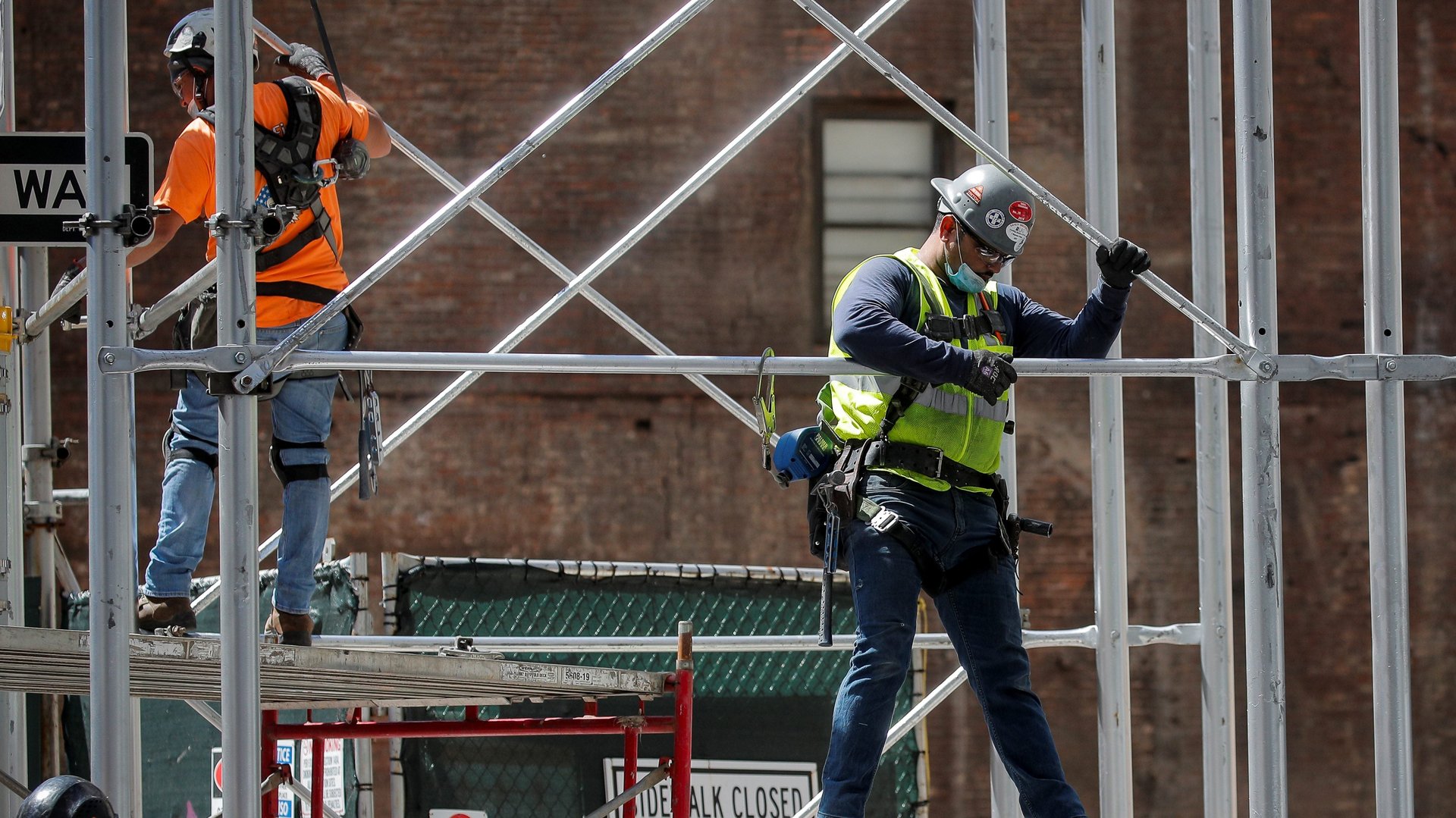Black Americans are still being left behind in the US job market recovery
Expectations for a US employment boom missed the mark last month, as hirings came in well short of what economists had forecast. Hopes for a jobs rebound for Black Americans, who were hit hardest by the pandemic, are also yet to materialize.


Expectations for a US employment boom missed the mark last month, as hirings came in well short of what economists had forecast. Hopes for a jobs rebound for Black Americans, who were hit hardest by the pandemic, are also yet to materialize.
The US added 266,000 jobs in April, according to the US Bureau of Labor Statistics. That’s far short of the 900,000 to 1 million jobs that many economists had been expecting. The unemployment rate for African Americans was 9.7%, up slightly from 9.6% the previous month. That rate is 3.7 percentage points higher than it was in February 2020, before the coronavirus pandemic tore through the US economy. For Hispanics, that pre-Covid gap is 3.5 percentage points, while it’s 3.3 percentage points for Asians and 2.3 percentage points for whites.
The employment to population ratio, a key job-market figure for economists, has improved by 6.5 percentage points for Black and white people in the US from a year ago, when unemployment peaked. For African Americans that ratio was 55.3 last month, compared with 58.2 for whites. That said, employment data for Black men in particular is understated because so many are incarcerated.
Economists are digging through the numbers to see why the jobs reports and their forecasts were so far apart. Possibilities include workers who are concerned about going back to work during the pandemic, and generous unemployment benefits that may have made finding a job less urgent for some people. School closings and a lack of childcare could be keeping some from returning to the workforce, although women’s unemployment rates are back below those of men.
What causes inequality in the labor market?
Unemployment rates are just one simple measure of job market activity, but the divergence underscores the deep racial disparities in the US. Joblessness for African Americans has long been higher than for whites and other groups, and Black people tend to get hit hardest in an economic downturn, said Harry Holzer, a professor of public policy at Georgetown University and a former chief economist at the Department of Labor.
When the US economy goes into a slump, the increase in Black unemployment is often 1.5 to 2 times of that for white people, Holzer said. That’s partly because of disparities in education, less seniority in jobs, as well as a series of structural factors including discrimination, a lack of social networks that can boost higher-quality employment, and high levels of incarceration, all of which are stem from systemic racism.
On the flip side, African Americans tend to benefit from faster hiring during the recovery. But so far, it’s not clear that Black people in the US are seeing that rebound, even as the economy comes back to life amid trillions of dollars of stimulus spending and millions of vaccine injections going into Americans’ arms each day to stem the health crisis.
Officials in Washington, in the wake of the George Floyd killing and inequalities that were highlighted by the Covid-19 pandemic, have taken some steps to address long-standing inequalities. The Biden administration has proposed plans for jobs and infrastructure and for families that have a long-term structural focus for the US economy, and part of that focus is to address racial and gender disparities. Likewise the Federal Reserve has made it clear that it would tolerate higher inflation than in the past—a sign that policy makers are aiming to see more people, from more backgrounds, back at work before allowing interest rates to increase, which could cool the jobs recovery.
Kyle Moore, an economist at the Economic Policy Institute, said he’s encouraged by the Fed’s increased focus on unemployment and higher tolerance for inflation. “In the past there have been Fed chairs who have been overly wary of inflation and they’ve often tried to fight it at the expense of employment,” he says. “That has disproportionately fallen on Black workers.”
Ana Campoy contributed to this story.